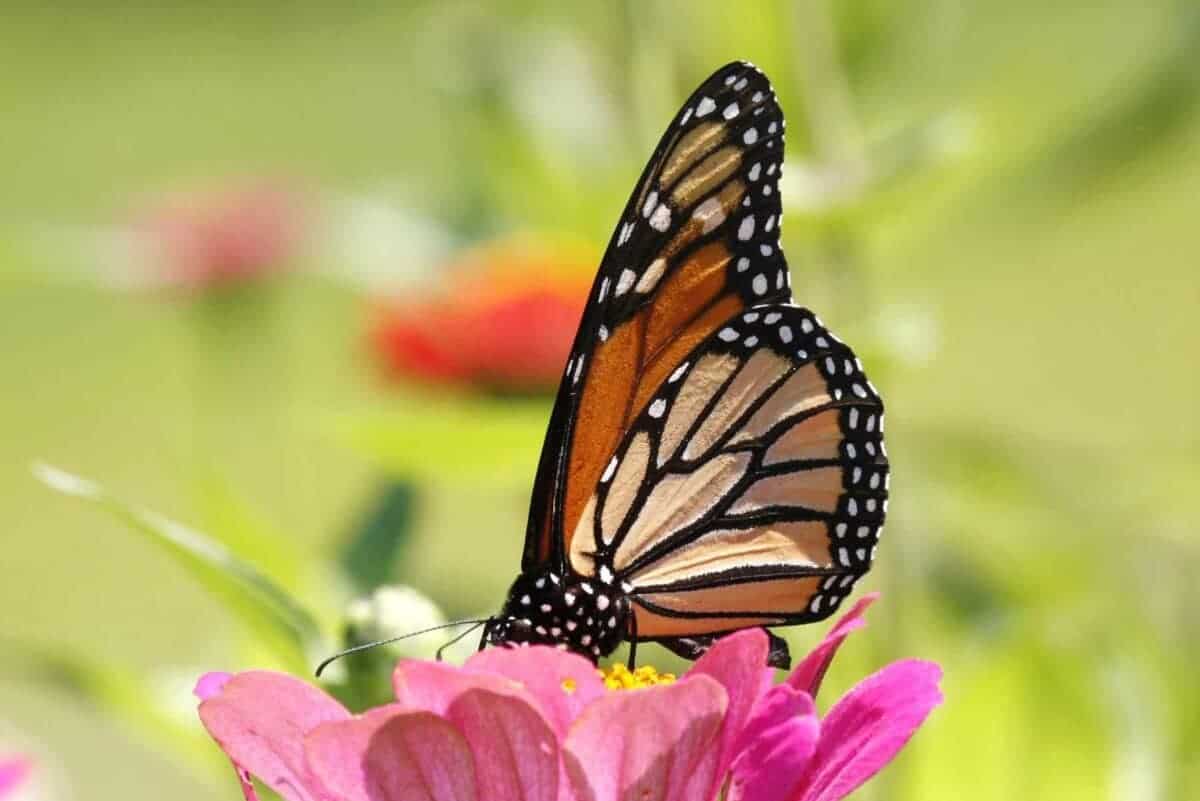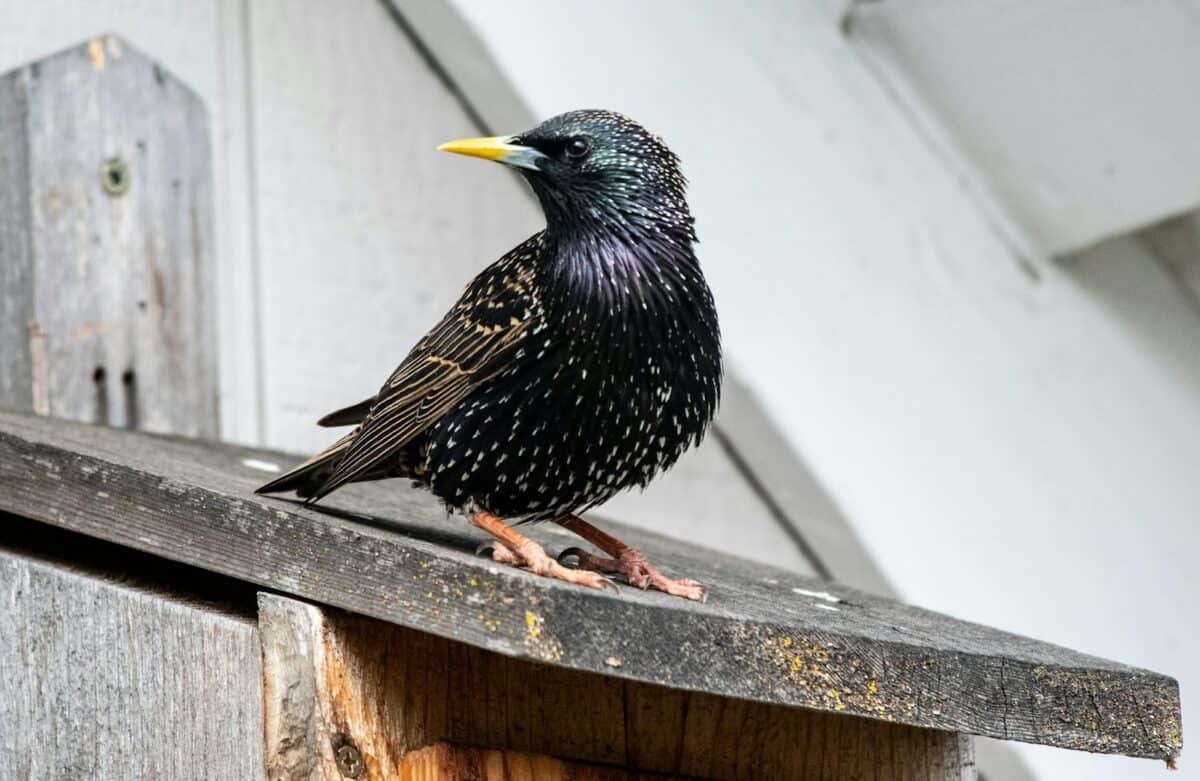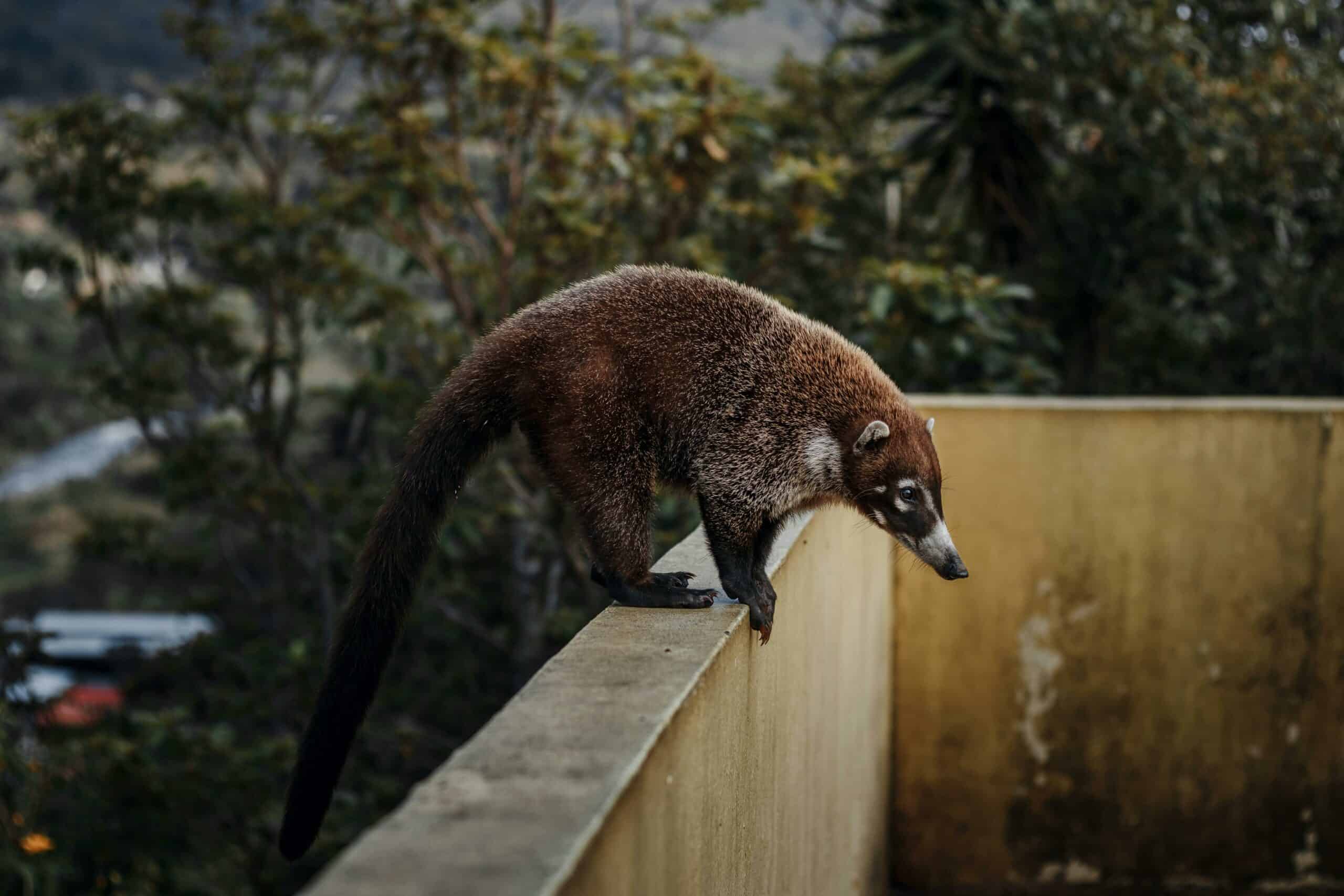The animal kingdom harbors countless mysteries, including the remarkable ability of certain species to self-medicate—a behavior scientists call zoopharmacognosy. Long before humans developed modern medicine, animals were discovering natural remedies in their environments to treat ailments, expel parasites, and support their overall health. This sophisticated behavior challenges our understanding of animal intelligence and provides valuable insights for human medicine. From primates to insects, numerous wild animals display an innate understanding of nature’s pharmacy, using plants, soils, and other natural materials to improve their wellbeing. Let’s explore 15 fascinating examples of wild animals that have mastered the art of natural medicine.
Chimpanzees The Leaf Doctors

Our closest genetic relatives have perhaps the most well-documented medicinal behaviors. Chimpanzees in Tanzania’s Gombe National Park have been observed folding and swallowing rough, bristly leaves from certain plants without chewing them. These leaves pass through their digestive systems intact, helping to scrape out intestinal parasites. The fascinating aspect of this behavior is its deliberate nature—chimps specifically select leaves with textured surfaces that are uncomfortable to eat yet effective at dislodging parasites. Research by Jane Goodall and other primatologists has shown that chimps suffering from intestinal discomfort will seek out these plants, which have no nutritional value but serve a purely medicinal purpose. Infected chimps have been documented to reduce their parasite loads by up to 90% after consuming these rough leaves.
Bears The Osha Root Healers

Bears emerging from hibernation often seek out Osha root (Ligusticum porteri), a plant with powerful antimicrobial properties. They chew the root and rub the resulting paste onto their fur, creating a natural insect repellent and antiseptic that protects their skin from parasites and infections during spring and summer months. Native American tribes observed this behavior and subsequently adopted Osha root as an important medicinal herb in their own pharmacopeia. The root contains compounds like thymol and carvacrol that effectively kill bacteria and fungi. Indigenous knowledge suggests bears also consume small amounts of the root to clear respiratory systems after the long winter hibernation, demonstrating their sophisticated understanding of the plant’s multiple medicinal applications.
Elephants The Birth-Inducing Botanists

Pregnant African elephants have been observed traveling considerable distances to find specific plants when nearing labor. One notable example is their consumption of the tree Boraginaceae, which contains compounds similar to oxytocin that can induce labor and ease delivery. This remarkable journey to find specific medicinal plants showcases elephants’ extraordinary memory and knowledge of plant properties across their vast territories. Researchers from the Kenya Wildlife Service have documented cases where pregnant elephants consumed plants that weren’t part of their regular diet, only to give birth shortly after. What makes this behavior particularly fascinating is that it appears to be taught from one generation to the next, with older females guiding younger pregnant elephants to these medicinal plants—evidence of cultural transmission of medical knowledge.
Parrots Clay Eaters for Detoxification

In the Amazon rainforest, numerous parrot species, particularly macaws, gather in large numbers at exposed clay licks on riverbanks. This behavior, known as geophagy, serves an important medicinal purpose. The clay contains minerals that bind to toxic compounds found in the seeds and fruits that make up the birds’ diet. By consuming clay, parrots effectively neutralize these toxins before they can cause harm. Studies have shown that these clay deposits are particularly rich in kaolin and bentonite, substances still used in modern human anti-diarrheal medications. What’s remarkable is the social aspect of this behavior—hundreds of birds may gather at once at prime clay lick locations, suggesting knowledge of these medicinal sites is shared throughout parrot communities. Researchers have noted that parrot consumption of clay increases during certain seasons when they eat more toxic fruits, indicating they adaptively self-regulate their medicine intake based on dietary needs.
Woolly Bear Caterpillars Self-Medicating Against Parasites

Woolly bear caterpillars, the larval form of the Isabella tiger moth, display a remarkable adaptation to combat parasitic fly infections. When infected by tachinid flies, these caterpillars change their diet to include plants high in pyrrolizidine alkaloids—toxic compounds that don’t harm the caterpillar but can kill or impair the parasites developing inside them. Research at Tufts University revealed that infected caterpillars actively seek out these toxic plants, while uninfected caterpillars avoid them. This behavior represents one of the best examples of therapeutic self-medication in invertebrates. The study found that infected caterpillars that consumed these medicinal plants had a 20% higher survival rate than those that didn’t, demonstrating the efficacy of their self-medication. This sophisticated response suggests even insects possess an innate ability to identify and utilize natural medicines when needed.
Baboons The Antimalarial Experts

Baboons in parts of Africa seek out the bitter fruits and bark of Balanites aegyptiaca during the rainy season when malaria-carrying mosquitoes are prevalent. These plant parts contain steroidal saponins and other compounds with demonstrated antimalarial properties. Researchers from the University of Cambridge observed that baboons don’t typically include these bitter plants in their regular diet but specifically consume them during high-risk malaria periods. Analysis of baboon fecal samples showed reduced parasite loads in individuals that consumed these plants compared to those that didn’t. What makes this behavior particularly interesting is its seasonal nature, suggesting baboons possess not only knowledge of plant medicine but also an understanding of disease cycles and preventative care—a sophisticated medical approach previously thought unique to humans.
Wood Ants Antiseptic Forest Pharmacists

Wood ants (Formica paralugubris) collect solidified conifer resin and incorporate it into their nests, creating a powerful antimicrobial environment that protects the colony from pathogenic bacteria and fungi. Research published in the journal Ecology Letters demonstrated that these resins contain terpenes that inhibit the growth of microorganisms harmful to the ants. In controlled experiments, colonies with access to resin showed significantly lower bacterial and fungal growth than those without. What’s remarkable is that collecting resin comes at a cost—it’s time-consuming and reduces foraging for food—yet the ants prioritize this medicinal material, particularly when facing disease outbreaks. This collective immune system represents one of the most sophisticated social medications in the animal kingdom, where preventative medicine is practiced at the community level rather than by individuals.
Orangutans Jungle Pharmacists

Orangutans in Borneo have been observed using specific plants to treat joint and muscle inflammation. They chew the leaves of Dracaena cantleyi into a paste, then rub this lather onto painful areas of their bodies. Remarkably, this same plant is used by indigenous human communities in the region for similar purposes. Chemical analysis of the plant revealed anti-inflammatory compounds similar to those found in ibuprofen. Primatologists documented this behavior after noticing certain orangutans would seek out these relatively rare plants when showing signs of discomfort but otherwise avoided them. The preparation method—chewing to release active compounds without swallowing—demonstrates a sophisticated understanding of how to extract medicine from plants. Even more interesting is that this knowledge appears to be passed from mother to offspring through observation and learning, establishing a medicinal tradition within orangutan communities.
Monarch Butterflies Medicating Future Generations

Monarch butterflies engage in a form of transgenerational medication by laying their eggs on milkweed plants. These plants contain cardiac glycosides that are toxic to most animals but are sequestered by monarch caterpillars, making both the caterpillars and adult butterflies unpalatable to predators. Recent research from Emory University revealed that infected monarch butterflies preferentially lay eggs on medicinal milkweed species with higher concentrations of these protective compounds when they carry parasites. This represents a remarkable form of medication not for themselves but for their offspring. The study found that caterpillars raised on these high-cardenolide milkweeds had significantly lower parasite loads. This sophisticated behaviour demonstrates how medication behaviours can extend beyond self-treatment to the protection of future generations—an advanced medical concept that parallels human preventative healthcare for children.
Bonobos The Medicinal Leaf Swallowers

Bonobos, close relatives of chimpanzees, practice a unique form of medicine by consuming specific leaves with antimicrobial properties. Researchers in the Democratic Republic of Congo have observed bonobos carefully selecting and ingesting Manniophyton fulvum leaves, which contain compounds effective against certain intestinal parasites and bacterial infections. Unlike food consumption, the bonobos fold these leaves and swallow them whole—a technique that maximizes the plants’ physical scouring effect in the digestive tract. Analysis of bonobo fecal samples before and after this behavior shows significant reductions in parasite loads. Of particular interest to scientists is that this behavior appears more common in dominant females and is subsequently copied by others in the group, suggesting a form of cultural transmission of medical knowledge. This pattern of social learning about medicine mirrors human traditional knowledge systems.
Starlings Aromatic Nest Protectors

European starlings incorporate fresh herbs like wild carrot, yarrow, and lavender into their nests, particularly during the breeding season. These plants contain volatile compounds with antibacterial and insect-repellent properties that help protect vulnerable chicks from pathogens and parasites. Research published in the Journal of Avian Biology demonstrated that nests with these fresh herbs had significantly lower bacterial counts and fewer ectoparasites than control nests. What’s fascinating is that starlings actively refresh these herbs when they begin to dry out and lose their volatile compounds—suggesting they understand the time-limited nature of the plants’ medicinal properties. Male starlings have even been observed increasing the amount of aromatic herbs in nests when females are choosing mates, suggesting the behavior may also signal their ability to provide good healthcare to potential offspring—a form of medicinal display not unlike human healthcare providers showcasing their abilities.
Coatis: The Resin Rubbers

Coatis in Central and South America have been observed practicing an unusual form of external medication. These raccoon relatives chew tree resin from plants in the Trema genus and vigorously rub it through their fur and onto their skin. The resin contains compounds with insecticidal and anti-tick properties, effectively serving as a natural pesticide. Researchers from the University of Illinois documented that coatis engaged in this behavior more frequently during humid seasons when external parasites are most abundant. Laboratory analysis of the resins confirmed the presence of terpenes and other compounds toxic to ticks, mites, and biting insects. This deliberate application of a plant extract to the body specifically to deter parasites represents a sophisticated form of preventative medicine. Interestingly, juvenile coatis learn this behavior by watching adults, with mothers actively demonstrating the technique to their young—another example of medicinal knowledge being culturally transmitted.
North American Brown Bears Wound Healers

North American brown bears treat wounds and skin irritations by creating and applying a paste made from Osha roots (Ligusticum porteri) mixed with their saliva. After chewing the roots to release the medicinal compounds, bears apply this mixture to wounds or irritated areas on their fur and skin. Ethnobotanical research has identified powerful anti-inflammatory and antimicrobial compounds in Osha roots, including coumarins and phthalides that effectively combat infection. Indigenous peoples of North America, observing this bear behavior, adopted similar uses for the plant, calling it “bear medicine” in many native languages. Wildlife biologists have documented bears with injuries seeking out these plants, sometimes traveling considerable distances specifically to locate them. The bears’ use of saliva in the preparation is particularly noteworthy, as mammalian saliva contains growth factors and antimicrobial compounds that enhance healing—suggesting the bears are creating a sophisticated two-part healing solution.
Sheep Self-Medicating Grazers

Wild sheep have demonstrated the ability to self-medicate against internal parasites by selectively consuming plants high in tannins when infected. Research conducted at Utah State University showed that parasitized sheep would choose foods high in tannins—compounds that can reduce intestinal worm loads—while healthy sheep avoided these same bitter plants. In controlled trials, infected sheep that consumed high-tannin plants reduced their parasite loads by up to 70% compared to control groups. What makes this behavior remarkable is that sheep will overcome their natural aversion to bitter tastes when they harbor parasites, suggesting an internal feedback mechanism that modifies food preferences based on health status. Studies of bighorn sheep in their natural habitat confirm this isn’t limited to domestic sheep but represents an evolved medicinal strategy. The fact that sheep can detect their own parasite load and adjust their diet accordingly demonstrates a form of physiological self-awareness previously underappreciated in these animals.
Conclusion: Nature’s Pharmacy and Its Lessons

The evidence of self-medication in the animal kingdom challenges our understanding of medicine as a uniquely human endeavor. From chimpanzees treating parasitic infections to ants creating antiseptic environments, these behaviors reveal sophisticated knowledge of natural pharmacology that has evolved over millions of years. What’s particularly remarkable is how many of these animal medicines have been independently verified by science to contain active compounds effective against the very conditions the animals are treating. This convergence suggests that the therapeutic properties of these natural substances are robust enough to be discovered through both evolutionary processes and controlled scientific inquiry.
These examples of zoopharmacognosy also highlight the importance of preserving biodiversity and natural habitats. As we lose plant species to deforestation and other human activities, we’re potentially losing valuable medicinal compounds—some of which animals have known about for millennia but humans have yet to discover. The pharmaceutical potential of these animal-identified medicines is substantial, with several modern drugs already tracing their origins to compounds first observed being used by animals.
Finally, these animal behaviors remind us that medicine is not merely a technological achievement but a biological necessity that predates humanity. The sophisticated medical knowledge displayed by diverse species—from insects to mammals—suggests that healthcare is a fundamental aspect of life on Earth, one that has been refined through natural selection across countless generations. By observing and understanding animal self-medication, we may not only discover new medicines but also gain insight into the evolutionary roots of our own medical practices.
As we continue to study these remarkable behaviors, one thing becomes clear: the pharmacy of nature has been open far longer than we previously imagined, with animal patients developing expertise that continues to inspire human medicine today.
- 13 Most Aggressive Mammals in the Wild - August 24, 2025
- 10 Behaviors That Keep Eagles Healthy And 3 That Shorten Lifespan - August 24, 2025
- 13 Wildest Animal Migration Journeys - August 24, 2025

